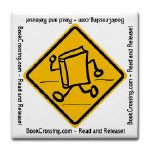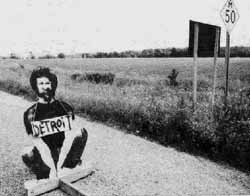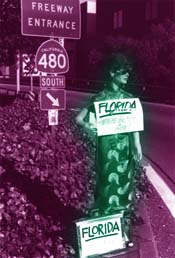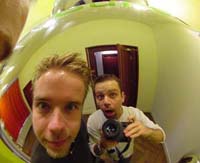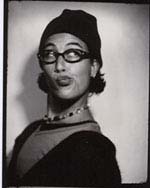|
|
|
INRESPONSE to the 24-hour availability of Amazon books, and to the constant presence of a billion intangible web pages, limited-run, handmade books are having a revival. They are durable art, sensual, and private. Blank journals can be purchased and filled in with sketches, or scraps of found material, diaries, or photographs. At the low end this passion has become a small industry known as memory books - glorified scrapbooks. At the high end, these journals are constructed page by page, then hand-sewn into stunning one of a kind works of art. A new market has emerged for collectors of these rare private tomes. Exhibits of "art journals" have gained legitimacy in museum space. A few adventuresome artists are combining the power of the web with the tangible power of a paper-bound book in hand. Just as Amazon will deliver a heavy book in the mail, one can order a limited edition of paper-based art from someone far away. What you get will always be a surprise. You might think of it as an open-ended magazine. It's an old idea once called Mail Art. What's new now is that the web matches folks who make mail art and private books with the folks who want them. These are often the same folks (prosumers Toffler calls them), and so this system has evolved into a peer-to-peer land mail art network. It uses the oldest peer-to-peer network we have - the postal system - which is cheap, truly global, and able to move tangible artifacts. Artists find audiences and audiences find artists on the web, then transport the art using stamps.
For example, consider the project called 20 Things. Twenty people volunteer to create twenty things in twenty days. The twenty creations can be somewhat identical (an edition of 20) or distinctly different. There is a bias toward flat artwork since it all goes through the mail. The 20 things are sent to the project coordinator (artist Judith Zissman ), who sorts the items into 20 piles and mails the sorted art back out to each of the 20 contributors. Each contributor now owns a unique edition of 20 unique mailable artifacts. The groups of 20 self-assemble by patron/artists signing up on the web. People who sign up but don't deliver are weeded out quickly.
In the same vein, 1000 Journals, another bookish project, uses the web and the land mail network to facilitate the creation and distribution of private books. The project was launched in July 2000 by a fellow who calls himself Someguy. Someguy has so far completed 800 journals. Each book is a blank, 5x8 inch Cachet sketchbook with a custom designer-designed cover that is mailed to a willing contributor. Each recipient completes as many pages in the book as they like with "art" (loosely defined), and when done, mails the book to the next person on the web-based sign-up list.The book can travel all over the world (30 countries so far), slowly. It can meander for years as artists work on it. Journals can get lost, too, forgotten on someone's shelf. Earlier contributors have the advantage of setting the tone of the book; later contributors have the advantage of enjoying the previous work.
Someguy is a full-time San Francisco-based designer, who works hard so he can play freely. So far he's put $20,000 of his own money into purchasing the 1,000 bound sketch books, and into commissioning a collaborative web site to track the books as they wander the globe looking for content. He's convinced an impressive list of known designers to produce 100 covers (in an edition of 10 each). "Even if only 10-20 journals ever return, I'd be happy," Someguy says. "If no journals ever came back, I would be bummed, yet I still would say it was worth it because so much great stuff has already been created. It inspires many others outside the project to do their own journals."

In these kinds of projects scale matters. Cameo, one of two other camera swap projects, started out with two dozen or so cameras a few years ago, but only 3 have made it back. The other swap, PhotoTrust, never got back a single camera of its ten given out and is now defunct. As Someguy notes, "You need to send a thousand out just to ensure a dozen make it back."
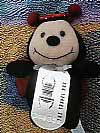
Ron Hornbaker and friends were inspired by 1,000 Journals, Where's George, and geocaching bugs to start up Bookcrossing - a movement to promote the sharing of books by tracking released books as they get passed along. So far 15,000 members have registered over 30,000 individual books (the kind you find in bookstores). Each book is "read and released" into the wild by leaving it on a park bench or airline seat, or passed onto friends. A label with a Bookcrossing ID and instructions affixed inside tells you what to do if you find one of these shared books - register it online, a process that automatically sends the original owner an email that his/her book has been tracked.
I was reminded by these collaborative efforts of a wonderful art hack some years ago. A full-size image of a person hitchhiking was cut out and painted on plywood The hitchhiker cutout was propped up along a road, thumb out, and eventually picked up and stuck in the back seat of the car. Instructions on the backside of hitchhiker told the driver where he (or she) was headed. You were supposed to give it a ride as far as you could and then stand it out along the road again to be picked up by the next Good Samaritan. As the hitchhiker ricocheted around the country, his travel stories accumulated on his self. That's the story I heard. The real story is almost as good. In the summer of 1981, Jim Pallas, a mail art artist, began making hitchhikers and sending them onto the road. At the time Jim was making full-sized silhouettes of himself for artistic amusement. As he tells it, "One was a silhouette of me sitting Buddha-like. In the back of my mind was [the upcoming] Focus' mail art show. The sitting figure looked like he was waiting for something to come along. He looked like he could be waiting for a ride. I wondered if he could get a ride to the Focus Gallery. I put a sign around his neck, DETROIT, and a note on the back that said 'Get me to a party at 743 Beaubien Street at 7:30 June 10th. You can come, too. Until then I don't much care. Take me as far as you going and set me by the side of the road. Please, don't put me on the expressway.' Three days later, a young man walked into the Focus Gallery with the figure under his arm, wanting to know from the director, Geri Baskin, what this was all about."
The web is spawning a large number of collaborative gathering-art projects. The electronic network is used as a way to disseminate the call for found art, coordinate the collection, and distribute the results back through a central hub site. It should be no surprise then that we find the Mirror Project that collects portraits taken in a reflective surface, or the Photo Booth Chronicle, a collaborative collection of photo booth snapshots, or the upcoming bathroom graffiti collection by Someguy.
An article like the one you are reading is the meat and potatoes of blogs. The web loves to talk about itself, about what the web can do. But I am tickled that this report is printed on paper. The world of atoms and the world of bits are not as far apart as most think, and when they commingle the new new really happens. Real soon now paper will have digital ink and ebooks will keep us turning pages. Everyone thought the new economy was the virtual world of dot-communism. In that dialectic vision there were either clicks or bricks. But it's when clicks are bricks that the new economy begins. As GPS chips shrink we'll place them into books and they will keep track of themselves. Our networks won't be all computers; we'll have our networks of art, of artifacts, of tools, and friends. These new versions of mail art are exploring the possible ways in which we can exploit peer-to-peer connections. They have a whiff of being frivolous, but I smell the future in them. As we connect everyone and everything, we can't but help to use the hive mind to collaborate in surprising and unexpected ways. A 1000 journals will become a million meandering objects collectively producing new ways of seeing ourselves.
20 Things This page was last modified on |
|

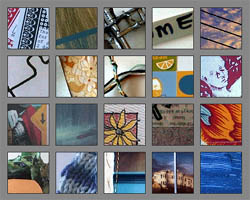
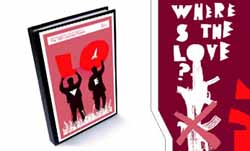
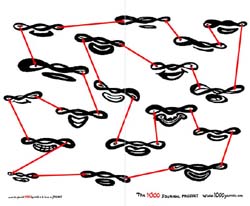
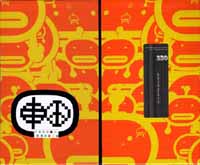
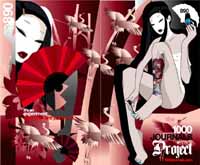
 The natural follow-up to this is 1000 Cameras -- pass around 1,000
disposable cameras and hope a few come back with glorious surprises
inside. Several projects have initiated ideas on a smaller scale.
PhotoTag has about two dozen cameras in circulation, with images along
the way posted on the web. Here is how they describe themselves:
"PhotoTag is a community photography project where we retrofit cheap
disposable cameras with shiny new packaging, artwork, instructions and
return postage. Each camera is then passed along to friends and
strangers with the request that they take one picture and pass it along
to someone else. (Phototaggers can also report on their experiences at
our website.) Once all the film is used up, the last Phototagger can
simply drop the camera in the mailbox--the return address, postage and
all the fine folks at the United State Postal Service will handle things
from there. When we get the cameras back we'll post the pictures here on the
PhotoTag website so everyone can see."
The natural follow-up to this is 1000 Cameras -- pass around 1,000
disposable cameras and hope a few come back with glorious surprises
inside. Several projects have initiated ideas on a smaller scale.
PhotoTag has about two dozen cameras in circulation, with images along
the way posted on the web. Here is how they describe themselves:
"PhotoTag is a community photography project where we retrofit cheap
disposable cameras with shiny new packaging, artwork, instructions and
return postage. Each camera is then passed along to friends and
strangers with the request that they take one picture and pass it along
to someone else. (Phototaggers can also report on their experiences at
our website.) Once all the film is used up, the last Phototagger can
simply drop the camera in the mailbox--the return address, postage and
all the fine folks at the United State Postal Service will handle things
from there. When we get the cameras back we'll post the pictures here on the
PhotoTag website so everyone can see." The idea of releasing identified things into the wilds of society where
they can be used and then tracking them using the web is so appealing
that various projects are doing this without bothering to make the
artifacts to begin with. The oldest collaborative tracker is Where's
George? You enter the serial number of a dollar bill (George Washington)
and you can then see when (if) someone else online has used that bill,
and where. The newest is the Travel Bug used in geocaching. Plastic
badges are imprinted with a unique ID number and then attached to an
object that is hidden in a cache whose exact latitude-longitude
coordinates are posted on the web. When a seeker using a GPS device
locates the hidden cache, they take the treasure with its Travel Bug and
re-hide it somewhere else, often far far away. The journey of the Bug as
it is hidden, released, and hauled around the world is displayed on the
geochaching website. There are several thousand Bug/Objects circulating
in the wild at the moment.
The idea of releasing identified things into the wilds of society where
they can be used and then tracking them using the web is so appealing
that various projects are doing this without bothering to make the
artifacts to begin with. The oldest collaborative tracker is Where's
George? You enter the serial number of a dollar bill (George Washington)
and you can then see when (if) someone else online has used that bill,
and where. The newest is the Travel Bug used in geocaching. Plastic
badges are imprinted with a unique ID number and then attached to an
object that is hidden in a cache whose exact latitude-longitude
coordinates are posted on the web. When a seeker using a GPS device
locates the hidden cache, they take the treasure with its Travel Bug and
re-hide it somewhere else, often far far away. The journey of the Bug as
it is hidden, released, and hauled around the world is displayed on the
geochaching website. There are several thousand Bug/Objects circulating
in the wild at the moment.